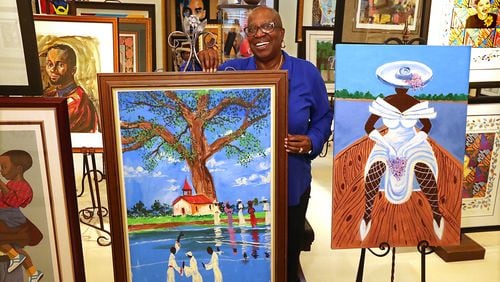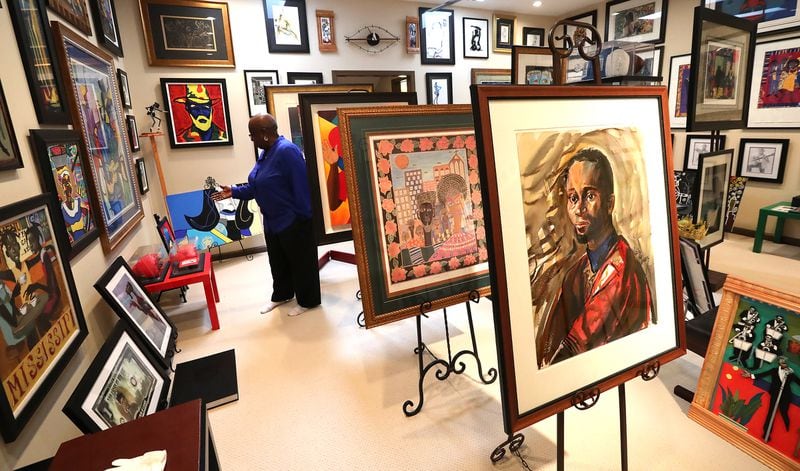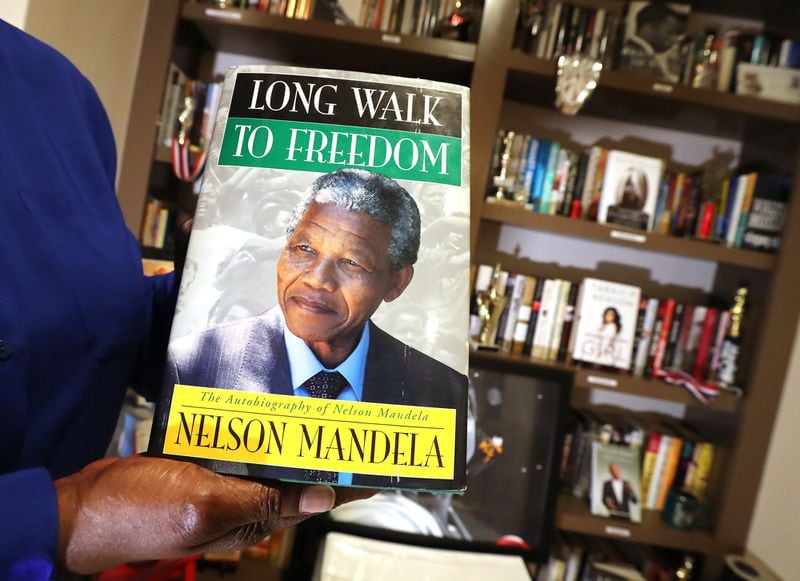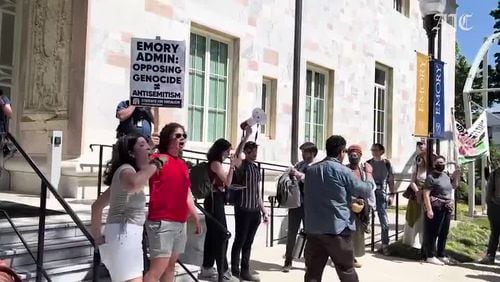It started with books -- first editions, most all of them signed and some of them with a story behind the story on the pages.
Tucked on a second floor bookshelf are the full works of Toni Morrison, Maya Angelou, Walter Mosley and other authors of the contemporary African-American literary canon.
When any author of note passed through Barnes & Noble Headquarters on Fifth Avenue in New York, Theresa Easton, a former New York City school teacher was there with a book in hand.
Eventually she graduated from books to art, sports memorabilia and other items until she amassed a collection celebrating decades of black achievement including more than 200 works of art by 64 different artists.
Eight years ago, after retiring to Atlanta, Easton searched for a home with enough space to house her collection. She wanted to create something special. “This was a dream,” said Easton standing in the center of the art gallery on the third floor of her home in Cobb County. “I wanted a gallery that looked like a gallery,” she said.
As a girl growing up in New York, Easton admittedly wasn’t much of a collector. Her family was poor but they made sure she got an education. As a teacher, she made it her mission to expose her fifth and sixth grade students at I.S. 229 in the South Bronx to as much culture as she could.
A documentary about James Brown spurred her to begin collecting works that showed the achievements of African Americans. “It amazed me that this man who came from the backwoods of Georgia had this musical ability. It made me think about the other people who had a story,” she said.
In the days before the National Museum of African American History chronicled the path of black people from their arrival in America to the present, Easton said she grew frustrated each time she visited museums. Their depictions of African Americans were “one step out of slavery,” she said. “There were people coming from other countries and this is how they are seeing black people?” she said.
So she looked for the other side, searching out art and memorabilia that showed the best that black culture had to offer and presented black people in a positive light. Yet she bristles at being considered a collector of black art. “I don’t collect black art, I collect good art,” Easton said.
Credit: ccompton@ajc.com
Credit: ccompton@ajc.com
Art is on prominent display throughout her home. Paintings of the human form by Maximillian Mozingo of North Carolina line the entryway, alongside paintings by noted Southern artist Jonathan Green of South Carolina and Atlanta-based artist Arthur Parks.
Wheaties boxes featuring black athletes are encased in Lucite containers in her kitchen. A set of ceramic dishes inspired by Oprah Winfrey and created by Bay area artist Rose Hill are on display in a glass-front cabinet. Ballet shoes worn and signed by Misty Copeland in 2016 hold a prominent space in the living room surrounded by shelves filled with black figurines by the late artist Annie Lee and Lladro, the Spanish porcelain brand.
Easton began developing her art collection by attending art shows across the country. She would purchase a poster and have the artists in attendance sign it. From there she began buying limited editions works.
The first original work of art she purchased was a painting by Leroy Campbell which she found at an art show in Philadelphia. Wherever she traveled, she looked for artwork that spoke to her and it resulted in a collection that features some of the most well known names in contemporary African American art.
Maurice Evans. Kevin Williams a.k.a WAK. Ted Ellis. Charly Palmer. Gilbert Young. William Tolliver. Synthia Saint James. Faith Ringgold. Kathleen Wilson. The list grew and grew. At one point, Easton realized there was a trend.
“I didn’t know I liked Southern artists until I looked at my collection and saw a lot of Southern artists,” she said.
When people step through the custom made door designed by Atlanta area artist Jose Awo into her third floor gallery, Easton usually hears “Wow! and Whoa!”
Every inch of space is filled with art -- on the walls or on easels. Near the center of the gallery, a large clear case holds sports memorabilia including boxing gloves signed by the likes of Muhammad Ali and George Foreman and a signed ball from the first WNBA All-Star game.
Almost as impressive as her collection of art and memorabilia are the stories of her encounters with authors, artists and celebrities.
There was the time in 1997 when Easton tracked Nelson Mandela during his visit to the Cathedral of St. John the Divine in New York. She arrived only to learn she that she needed a ticket.
Credit: ccompton@ajc.com
Credit: ccompton@ajc.com
Somehow she made it inside without one and grabbed a seat on the aisle. She carried with her a $6 copy of Mandela’s three-year-old book “The Long Walk to Freedom,” and she had every intention of asking him to sign it.
As Mandela moved through the crowd to the exit she reached out. Security cut her off but Mandela’s wife Graca Machel reached out to Easton. “Come with me. I’ll get Nelson to sign the book,” Machel said. And she did.
When Bill Cosby made an appearance in 2007 at Hueman Bookstore on 125th St. in Harlem, guests were told he would not sign anything other than his new book “Come on People.” Easton strolled by with her Little Bill doll sticking out of her tote bag. Cosby saw the doll, called out to Easton and signed his name right across the back of the doll’s head.
Meeting the people who create the items she collects is what Easton most appreciates. She wants to know about them, their lives and what motivates them.
Each year, on the Friday after Thanksgiving she hosts Atlanta-based artists, friends and family at her home, inviting them up to her gallery to hang out, eat and talk.
Many have been there before, but those who haven’t have the same reaction as anyone who walks into her magical space. “Wow!” said Easton. “They are overwhelmed.”
About the Author









